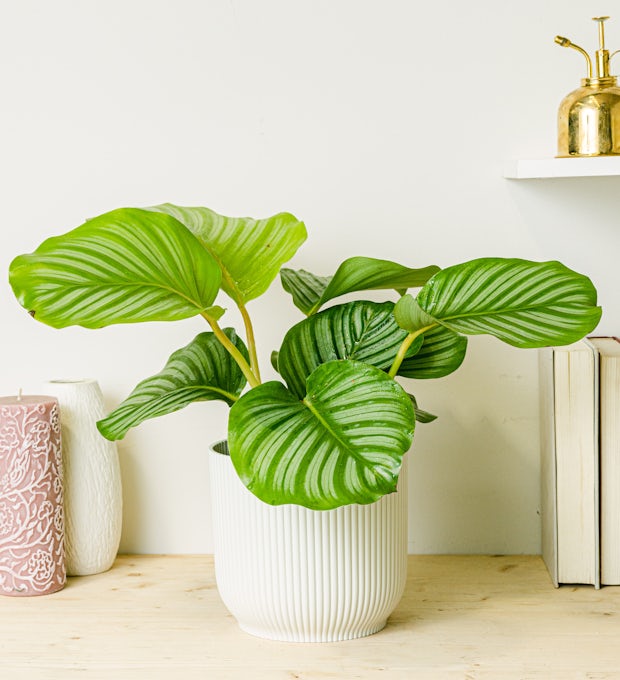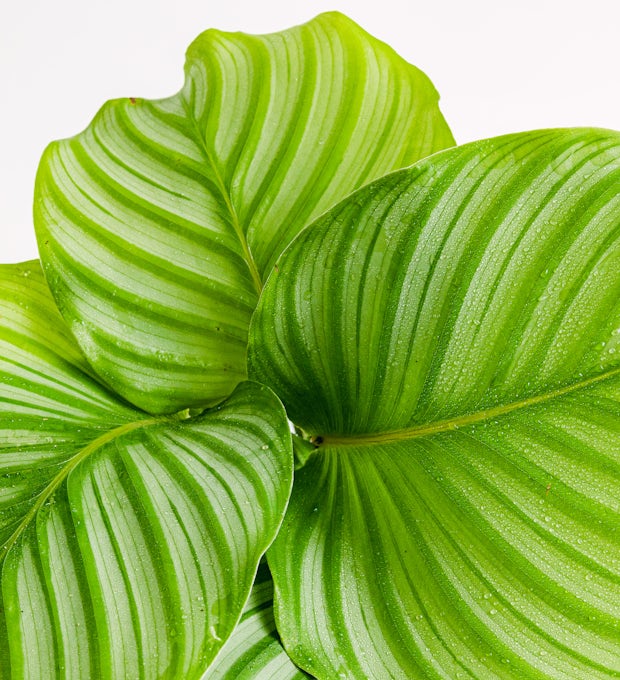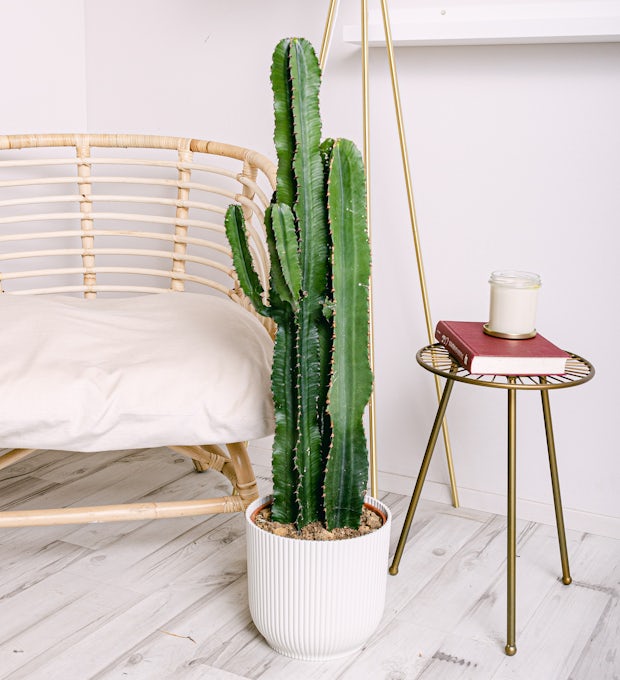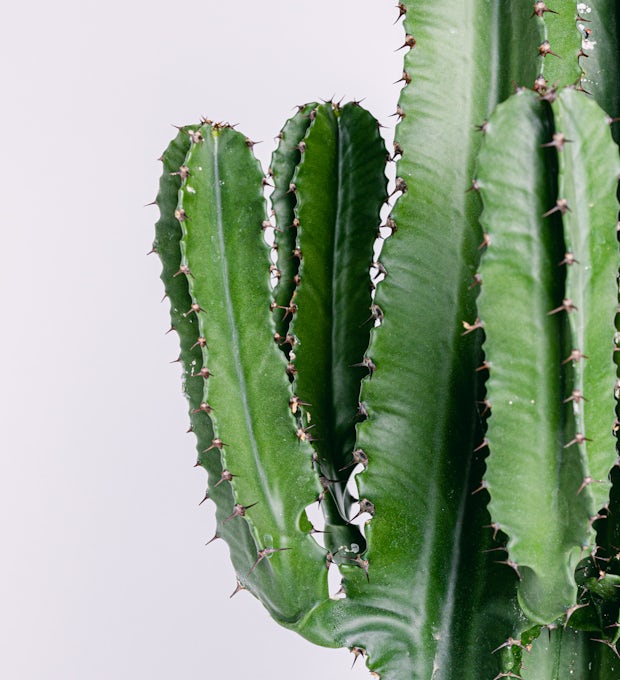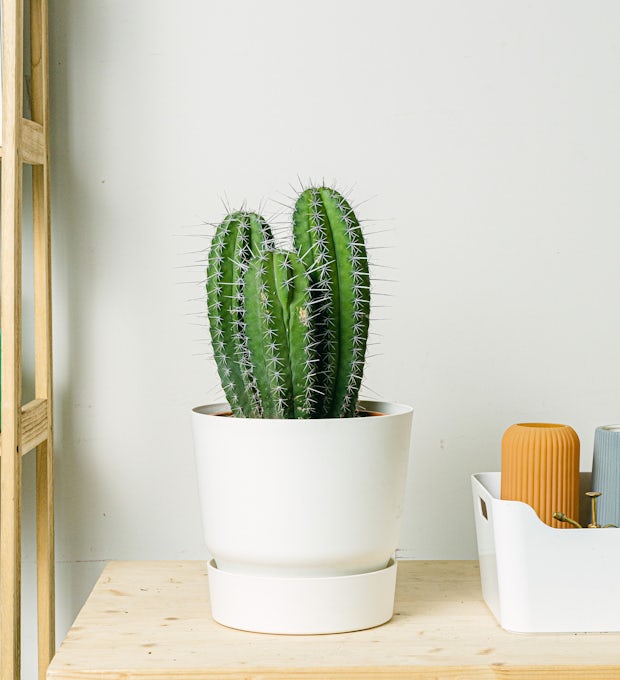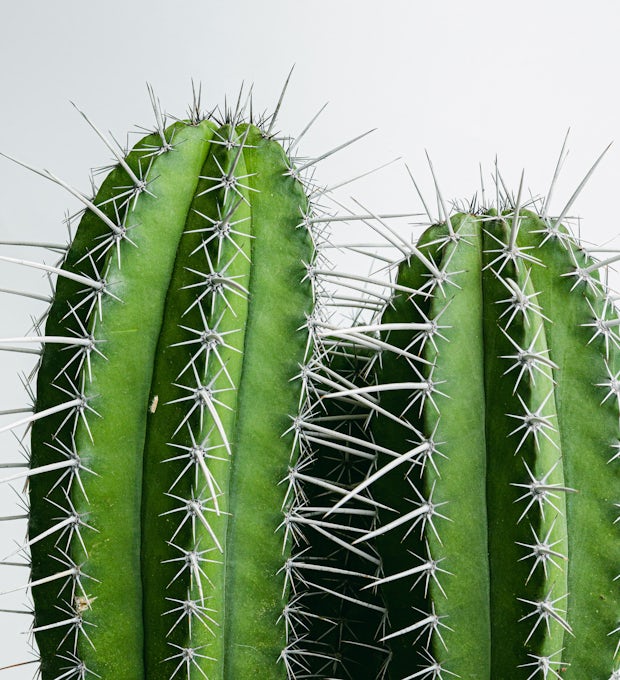The quality of the air we breathe in our homes is of great importance for our health. However, indoor spaces can often be polluted with pollutants that can have a negative impact on our respiratory system and overall well-being. A simple and natural way to improve the air quality in your home is to use healthy houseplants. These plants can not only filter pollutants from the air, but also regulate humidity. In this article, you'll learn about the best houseplants for clean and healthy air, how they can remove pollutants, and how to best care for them. Discover the positive effects of greenery on your health and be inspired by creative ways to incorporate houseplants into your interior design.
Why is indoor air quality important?
Indoor air quality is of great importance as we spend a significant part of our time indoors. Poor air quality can have a negative impact on our health and well-being. Pollutants such as dust, allergens, chemical fumes, and VOCs (volatile organic compounds) can accumulate indoors and lead to various health problems, including respiratory diseases, allergies, headaches, and fatigue. In addition, poor air quality can also affect concentration and productivity.
It is important to take steps to improve indoor air quality. One way is to introduce houseplants, which can help purify the air of harmful substances. Plants have the ability to filter pollutants such as formaldehyde, benzene, and trichloroethylene from the air and release oxygen. Not only does this help improve air quality, but it can also make the indoor climate more comfortable.
By paying attention to the air quality in our indoor spaces, we can improve our health and well-being. It is important to ventilate regularly to let in fresh air and remove pollutants. In addition, we should make sure that our houseplants are healthy and properly cared for to make the most of their air-purifying properties.
Overall, we should not underestimate the importance of indoor air quality. By taking simple measures such as including houseplants, we can create a healthier and more comfortable indoor climate.
The best houseplants for clean and healthy air Indoor air
quality can often be worse than outdoors. That's because many items in our homes can emit pollutants that we breathe in. Luckily, there are houseplants that can help purify the air in our homes and keep it healthy. Some of the best houseplants for clean and healthy air include bow hemp, birch fig, dragon tree, ivy, and leaf. Bow hemp is particularly effective at removing formaldehyde from the air. Birch figs are known to filter formaldehyde, benzene, and trichloroethylene from the air. The dragon tree is another great remover of formaldehyde and other harmful chemicals. Ivy Utut is known to remove mold spores from the air, making it an ideal plant for allergy sufferers. The monophyte is particularly effective in removing toxic ammonia from the air.
These houseplants are not only good for our health, but they are also relatively easy to care for. They only need to be watered occasionally and must be placed in a place with sufficient light. To keep your plants healthy, you should clean them of dust regularly and make sure their leaves are free of pests.
If you're looking for ways to improve your indoor air, be sure to incorporate one or more of these houseplants into your home. Not only do they help make your air cleaner and healthier, but they can also serve as a decorative element and add a fresh touch to your space.
We ship plants to all locations, you can see more options here.
Plants that filter pollutants from the air can play
an important role in improving indoor air quality. Some plant species have the amazing ability to filter pollutants from the air, creating a healthier indoor climate. These plants are a great addition to any household, especially for people who suffer from allergies or respiratory diseases. Some
of the best plants that can filter pollutants from the air include aloe vera, bow hemp, dragon tree, and ivy. These plants absorb pollutants such as formaldehyde, benzene, and trichloroethylene, which are commonly found in furniture, paints, and cleaning products. Through their natural ability to purify the air, they help improve indoor air quality.
To benefit from the air-purifying properties of these plants, it is important to take care of them regularly. This includes watering at appropriate intervals, removing dead leaves, and placing them in an area with adequate light. Good care not only ensures healthy plants, but also effective filtration of pollutants in the air.
Incorporating houseplants into interior design can be done in a creative way. They can be placed in hanging baskets or displayed in stylish pots. The green leaves and colors of the plants give any room a natural and calming atmosphere.
Discover the positive effects of houseplants on your health and ensure a clean and healthy environment in your home. By choosing plants that can filter pollutants from the air, you are investing in your own health and well-being.
We ship plants to all locations, you can see more options here.
How houseplants
can regulate humidityHouseplants are not only a beautiful decoration for your home, but they can also regulate humidity. If the air in your home is too dry, it can lead to various problems, such as dry skin and eyes, irritated airways, and even electrostatic discharge. Luckily, there are some houseplants that can help make the indoor climate more comfortable. Plants such as bow hemp, rubber tree or fern are able to absorb moisture from the air and store it in their leaves. As a result, the humidity in the room naturally increases. Another benefit is that houseplants can also help increase oxygen levels in the room and filter pollutants from the air. In this way, they not only contribute to improving the indoor climate, but also to the health of the residents. So, if you're looking for an easy and natural way to improve the indoor climate in your home, you should definitely incorporate some houseplants into your interior design. However, keep in mind that each plant has different light and water needs. It is therefore important to find out about the care needs of the plants before buying to ensure that they can grow healthy and vigorous.
Care tips for
healthy houseplantsTo keep your houseplants healthy and vigorous, proper care is of great importance. Here are a few simple tips to help your houseplants grow optimally. First of all, it's important to choose the right location for your plants. Make sure they get enough light, but avoid direct sunlight. Make sure your plants are watered regularly, but make sure they don't get too much water. It is better to water in small quantities and let the soil dry a little between waterings. It is best to use stagnant water or rainwater, as tap water often contains too many minerals. Good ventilation is also important. Make sure your plants get enough fresh air by airing regularly. Remember to regularly clean your plants of dust by wiping their leaves with a damp cloth. Finally, you should fertilize your plants regularly to make sure they are getting enough nutrients. Use a special houseplant fertilizer and follow the instructions on the package. With these simple care tips, you can ensure that your houseplants stay healthy and beautiful, and that you ensure clean and healthy air in your home.
Creative ways to incorporate houseplants into your interior design There are many creativeways to incorporate houseplants into
yourinterior design while improving the air quality in your home. One way is to present different types of plants in different containers for a varied and interesting look. For example, you can put small succulents in hanging glass balls or arrange herbs in decorative pots on the windowsill.
Another idea is to use plants as natural room dividers. Large plants, such as ficus or dragon trees, can serve as green partitions while adding a touch of nature to your living space.
If you have space on the walls, you can also create vertical gardens. hanging planters or wall shelves with integrated flower pots allow you to present your plants in a space-saving and aesthetically pleasing way.
In addition to traditional pots, you can also use unconventional containers to add a unique touch to your houseplants. Old teapots, mason jars or even wooden boxes can serve as original planters and add a personal touch to your interior design.
By incorporating houseplants into your interior design, you not only create a pleasant atmosphere, but also improve the air quality in your home. Unleash your creativity and experiment with different presentation options to enhance your living space and reap the health benefits of houseplants.
Discover the positive effect of green
plants on your healthGreen plants are not only decorative, but also have a positive effect on our health. They can reduce stress, improve air quality, and even improve our concentration. Through photosynthesis, they produce oxygen and filter pollutants from the air, which is especially important in enclosed spaces. Houseplants can also increase humidity, which is helpful when the air is dry in winter. Higher humidity can also prevent colds and protect our respiratory tract.
In addition, green plants can also improve our mood. Studies have shown that looking at plants reduces stress and makes us happier. Plants can also help us relax and promote a peaceful sleep.
To take advantage of the positive effects of houseplants, you should follow a few basic care tips. Each plant has different needs in terms of light, water and temperature. Therefore, it is important to get to know the individual needs of your plants. Repotting and fertilizing should also be done regularly to promote plant growth and health.
There are many creative ways to incorporate houseplants into your interior design. From hanging plants to large ferns, there are a variety of options to suit every room and style. By incorporating green plants into your home, you can not only improve your health, but also beautify your spaces.
Indoor air quality is an important issue that is often neglected. Luckily, there are a variety of houseplants that not only look beautiful, but can also help make the air in your home cleaner and healthier. They filter pollutants from the air and regulate humidity. However, it is important that you take care of your houseplants and take care of them regularly so that they can take full effect. There are also creative ways to incorporate houseplants into your interior design to create a pleasant atmosphere.
As readers, we should ask ourselves how we can change our own habits to improve the air quality in our homes. Can we add more houseplants? Or should we be more concerned about what cleaning products we use or how often we ventilate? There are many factors that can help improve air quality, and it's worth thinking about how we can do our part. By becoming aware of how important clean air is for our health and what actions we can take to improve it, we can have a positive impact on our lives and our environment
